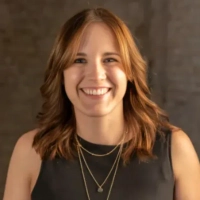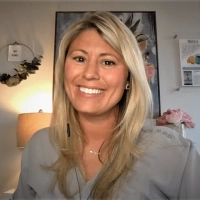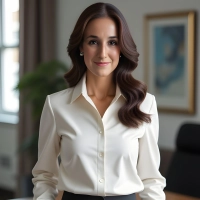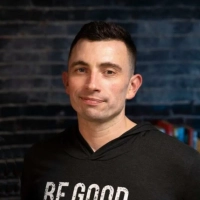How Do You Approach Risk-Taking in Business Decisions?
Navigating the uncertain terrain of business decisions demands both courage and strategy. This article distills expert insights on embracing calculated risks to propel a business towards growth and innovation. Learn how bold decision-making, underpinned by thorough analysis, can transform risks into rewarding investments.
- Be Bold and Build a Thriving Business
- Calculated Risks Drive Growth and Innovation
- Calculated Leap Expands Startup Growth Consulting
- Calculated Decisions Lead to Business Expansion
- Calculated Process Transforms Legacy System
- Balance Analysis and Instinct for Strategic Risks
- Scenario Analysis Attracts Dedicated Customer Base
- Offer Guarantees to Secure Retail Partnerships
- Experiment Early to Gain Competitive Advantage
- Evaluate Risks and Rewards for Smart Investments
- Data-Driven Risks Lead to Successful Campaigns
- Weigh Risks and Benefits for Favorable Outcomes
- Diversify Services for Increased Client Retention
- Research-Supported Gut Feelings Lead to Success
- Remote Work and Global Team Lead to Success
- Invest in Digital Tools for Client Convenience
- Control Manufacturing for Quality and Pricing
- Shift Marketing Focus to Improve Profitability
- AI Solutions Differentiate and Drive Growth
- Invest in Property for Significant Profit
- Invest in AI to Enhance Document Processing
- Transfer Risk Through Contract Management
- Pivot Services to Meet Market Demands
- Strategic Risk-Taking Leads to Success
- Introduce Subscription Model for Customer Loyalty
Be Bold and Build a Thriving Business
Be Bold: How Risk-Taking Built a Thriving Property Management Firm
In business, risk is inevitable. You can't grow, innovate, or make a difference without stepping into the unknown. When I started my property management firm, I wasn't just taking a risk—I was betting everything on myself, my vision, and my ability to figure things out. That mindset continues to drive the success of our business today.
Risk-taking doesn't mean jumping in recklessly. It's about having the confidence to move forward, even when the path isn't crystal clear. My philosophy is simple: If you trust yourself to learn, adapt, and follow through, you can take bold risks and make them pay off.
When I left my corporate career in Operations, I wasn't walking into certainty. My husband was deployed, I had a newborn and a toddler at home, and was mid-renovation on our house. Starting a business felt like madness—but also the only way forward.
I didn't have a polished plan or a full understanding of what running a property management firm entailed. But I knew I could build something better than what I'd experienced with other local managers. I leaned on what I did know, committed to figuring out the rest, and never looked back.
One of my biggest risks involved a property that other managers had written off. It had problem tenants, extensive damage, and a reputation that scared off renters. The owner was overwhelmed and ready to give up.
I saw potential. I managed the tenant turnover, oversaw repairs, and crafted a marketing strategy that emphasized the home's strengths rather than its past. Within weeks, I secured a reliable tenant paying market rent.
That success led to a long-term partnership with the owner, who later referred multiple clients to me. It also reinforced my reputation as a company willing to tackle tough situations head-on.
Today, we run a thriving property management firm that also offers HOA and renovation services. Taking bold risks has allowed us to grow, serve our clients better, and build a business we're proud of.
If there's one thing I've learned, it's this: You don't need all the answers to succeed. Be confident in your ability to figure it out and commit to the process. Whether you're starting a business, managing a property, or switching management companies, bold decisions often lead to the greatest rewards.

Calculated Risks Drive Growth and Innovation
Risk-taking is an integral part of business growth and innovation. My approach to risk is calculated and strategic, blending intuition with data-driven analysis. I believe in assessing potential risks against the possible rewards while ensuring that the downside is manageable. By prioritizing informed decisions, leveraging past experiences, and creating contingency plans, I aim to make risks as structured and controlled as possible.
My Risk-Taking Framework
Understanding the Opportunity: Every risk begins with identifying an opportunity. I evaluate its alignment with business goals, potential ROI, and the competitive advantage it could provide.
Analyzing Data and Scenarios: I gather relevant data to understand the potential outcomes and employ scenario planning to weigh the best and worst-case scenarios.
Managing the Downside: I ensure the potential downside is within acceptable limits. If the worst-case scenario is something the business can survive, I feel more confident moving forward.
Team Collaboration: Consulting with key stakeholders and team members provides diverse perspectives and reduces blind spots.
Iterative Action: When possible, I implement the decision in phases to mitigate risks incrementally and learn as we go.
An Example of Successful Risk-Taking
One pivotal risk I took was expanding our services into cybersecurity—a field outside our original MSP focus. It required significant investment in training, certifications, and new tools. At the time, it was a daunting decision, as it meant reallocating resources from established revenue streams to an untested area.
The risk paid off when the cybersecurity arm quickly gained traction, attracting clients concerned about emerging threats. Within a year, we became known for our robust security solutions, which not only diversified our revenue but also strengthened customer trust in our brand. Today, cybersecurity is a core part of our offerings and a major growth driver.
Why This Worked
Market Demand: We identified a growing need for cybersecurity services among our client base.
Continuous Learning: We adapted and evolved based on client feedback and industry trends.
Risk-taking, when approached thoughtfully, creates opportunities to push boundaries and unlock new potential. By combining careful analysis, calculated courage, and a clear plan, I've learned to make risks not just manageable but transformative.

Calculated Leap Expands Startup Growth Consulting
My approach to risk-taking was heavily shaped by my early banking days at Sparda and later refined through my experiences at N26 and Deloitte. At spectup, I use what I call the "calculated leap" method - thoroughly analyzing data while acknowledging that not every variable can be perfectly measured. I learned this balancing act during my time at BMW Startup Garage, where taking chances on innovative startups was part of the job.
One significant risk we took at spectup was expanding our services beyond pitch deck creation into full-scale startup growth consulting. The safe path would have been sticking to our core offering, but I noticed during my time at diffferent that clients needed more comprehensive support. The decision meant investing heavily in new talent and potentially confusing our market position, but our data showed that 38% of startups were failing due to cash problems, and 35% due to poor product-market fit - issues we knew we could help solve.
We prepared for this expansion by first running a small pilot program with three existing clients, using the same methodical approach I learned at Deutsche Bahn for testing new markets. The risk paid off significantly - within six months, our client base had grown by 40%, and more importantly, our clients' success rates improved dramatically. We were now helping them solve fundamental business challenges rather than just creating pitch decks.
This experience taught me that the biggest risks often come from not taking action when opportunities present themselves. It's about making informed decisions based on data while having the courage to move forward even when you can't predict every outcome.

Calculated Decisions Lead to Business Expansion
Risk taking in business is all about calculated decisions, and for me, it starts with leveraging my years of experience and qualifications to assess potential outcomes thoroughly. I weigh the risks against the potential rewards, ensuring I have a deep understanding of the task at hand before diving in. For example, when I first decided to expand Ozzie Mowing & Gardening beyond traditional lawn care into full service landscaping and garden design, it was a significant leap. I invested in advanced horticulture courses to sharpen my theoretical knowledge, upgraded equipment, and hired specialized team members to provide the level of service I envisioned. It was a bold move, but I saw the growing demand for tailored, expert-level garden transformations and trusted my expertise to guide the business into this new territory. One particular success story from this expansion came when a client wanted to transform a bland outdoor area into a sustainable garden that incorporated native plants, vegetable beds, and water-efficient landscaping. This was no small feat, but my background in horticulture and years of hands-on experience allowed me to create a plan that balanced aesthetics with functionality. The project was a standout success, leading to glowing referrals and a growing reputation in this niche. That decision to take a calculated risk not only paid off financially but also positioned my business as a go to provider for high level garden transformations. It's moments like these that reinforce the importance of taking thoughtful, well informed risks in business.
Calculated Process Transforms Legacy System
In business, I approach risk-taking as a calculated process, grounded in thorough research and contingency planning. A standout example was our decision to transition a legacy system into a cloud-based platform. At the time, many of our clients were accustomed to on-premises solutions, and we risked alienating part of our customer base.
To mitigate this, we engaged in direct customer outreach, explaining the benefits such as scalability and cost efficiency, while also offering tailored migration plans. Additionally, we performed a phased rollout, allowing clients to transition at their own pace.
The results were transformative. Within six months, 80% of our clients had adopted the new platform, and our revenue increased by 25% due to upselling opportunities. It also opened doors to new markets, as the cloud platform appealed to businesses requiring remote capabilities.
Key Takeaway: Risk-taking is about balancing bold decisions with robust preparation. By listening to stakeholders and aligning innovation with their needs, risks can turn into opportunities that drive long-term growth.

Balance Analysis and Instinct for Strategic Risks
For me, risk-taking in business decisions is about finding a balance between calculated analysis and trusting your instincts. I approach it like I would with any major real estate investment: assess the potential return, evaluate the risks involved, and ensure I have a plan B in case things don't go as expected. It's not about taking wild leaps; it's about taking smart, strategic steps that align with my long-term goals.
One example that stands out is when I expanded my real estate business to include development projects in multiple regions, including the U.K., the Caribbean, and here in British Columbia. It was a big leap because it meant navigating different markets, regulations, and challenges. I knew the stakes were high, but I also saw an opportunity to diversify and grow.
I took the time to do my due diligence, studying the markets, securing reliable financing, and building a team of experts to help manage the projects. One particular project in the Caribbean could have gone either way, but it paid off beautifully because I trusted the data and the people I was working with. That experience not only strengthened my business but also reinforced my belief in calculated risk-taking.
In my opinion, taking risks is essential to growth, especially in real estate and interior design, where trends and markets constantly shift. You can't achieve big wins if you're afraid to step out of your comfort zone, but those steps need to be backed by careful planning and a vision for the future.

Scenario Analysis Attracts Dedicated Customer Base
Embracing risk in business requires a clear understanding of both the potential upsides and the possible downsides. I utilize scenario analysis where different strategies are mapped out based on varied future events. A good example was when we decided to exclusively source rugs made in the US. This strategy was risky because it meant higher production costs and eliminating a large portion of the global supplier market. Initially, it was uncertain if customers would prefer the higher cost associated with local products. However, this decision paid off as it attracted a dedicated customer base passionate about supporting American-made goods and appreciating the transparency of knowing exactly where their rugs come from. This approach also reinforced our brand's reputation for quality and sustainability. Regularly reviewing our customer feedback helped fine-tune this decision, providing insights into consumer values and expectations.

Offer Guarantees to Secure Retail Partnerships
Calculated risk-taking led to a game-changing decision in our sustainable packaging business. When major retailers were hesitant about switching to our plastic-free alternatives, we made the bold move to offer a 60-day money-back guarantee to first-time business customers. This decision required significant upfront investment and carried the risk of potential returns. However, the data from our pilot program showed that sustainable packaging could reduce shipping costs by 27% while meeting all durability requirements. The risk paid off remarkably - our client retention rate reached 91%, and only 3% of customers requested refunds. This confidence-building approach helped secure partnerships with three major retail chains, increasing our revenue by 156% within six months. The success of this initiative also sparked a market shift, as competing businesses began exploring plastic-free alternatives, creating a broader positive environmental impact across the industry.

Experiment Early to Gain Competitive Advantage
At Tele Ads, I see risk-taking as calculated experimentation.
One example was when Telegram introduced a new ad format that wasn't widely tested.
Instead of waiting for others to adopt it, I decided we'd be among the first to try it for a client in the tech space.
The decision was based on research showing their audience preferred innovative, interactive content.
We worked closely with the client to design a campaign tailored to this format.
The results exceeded expectations-engagement rates doubled compared to previous campaigns, and the client saw a significant spike in leads.
This experience reinforced that taking informed risks can open doors to growth, especially when grounded in data and a willingness to adapt quickly.
Evaluate Risks and Rewards for Smart Investments
When it comes to approaching risk-taking in my business decisions, I always start by evaluating the potential risks and rewards. This involves carefully analyzing the situation, doing thorough research, and seeking advice from experienced colleagues or mentors. Once I have a good understanding of the risks involved, I weigh them against the potential benefits or opportunities that could arise.
One example of when taking a calculated risk paid off for me was when I decided to invest in a property that had been on the market for a while. Many other agents had overlooked it due to its location in a less desirable neighborhood. However, I saw the potential in the property and knew that with some renovations and marketing efforts, it could attract buyers looking for a more affordable option.
Despite some hesitation from my colleagues, I went ahead with the investment and was able to secure the property at a lower price than what it was initially listed for. After putting in some renovations and using unique marketing tactics, I was able to sell the property within a short period of time and at a higher price than expected. This not only brought me a significant profit but also helped boost my reputation as an agent who can identify hidden gems in the market.

Data-Driven Risks Lead to Successful Campaigns
Risk-taking is an integral part of running a business, especially in an environment that is constantly changing, like digital marketing. My approach to risk-taking is rooted in data and informed decision-making, rather than taking risks on a whim. I always try to assess the potential rewards versus the risks by analyzing market trends, understanding customer behavior, and using the insights available through analytics tools. While I don't shy away from risk, I believe it's about calculated risks that align with my long-term goals.
One notable example of when taking a calculated risk paid off was when I decided to scale up a client's ad spend on a new product launch, despite the early signs being a bit mixed. The product had potential, but the market response in the first few days wasn't as strong as we hoped. However, after analyzing the data from our campaigns, I realized that there were some audience segments that hadn't been fully targeted, and that tweaking our ad targeting strategy could yield better results.
I took the risk of significantly increasing the budget while adjusting the campaign's targeting to focus on these untapped segments. We optimized the ads based on the insights we gathered, which led to a massive increase in conversions. The campaign ultimately delivered an ROI that far exceeded the initial investment, and the risk paid off by helping the product get the visibility it needed for a successful launch.
The key takeaway from this experience is that taking risks can lead to significant rewards, but only when backed by careful analysis and a willingness to pivot based on real-time data. It also reinforced the idea that in business, the potential for growth often lies just beyond the comfort zone.

Weigh Risks and Benefits for Favorable Outcomes
Weighing the possible risks against the potential benefits is one method I use to approach risk-taking in business choices. As a real estate investor, before making any decision on a property, I thoroughly consider the property's condition, the location, and the state of the market. This raises the likelihood of a favorable outcome while lowering my dangers.
I took a risk on a house that had been for sale for a while, and it was one instance where my strategy paid off. The property required a lot of repair, but it was in a desirable area. Because of the considerable risk, several other realtors had passed it up. However, following a thorough assessment, I recognized the property's potential and decided to take a risk.
It took a lot of time, money, and resources for me to promote and renovate the house. The property sold within a few weeks at a significantly higher price than I had originally invested, so my decision was worthwhile despite the early dangers. Not only did this choice lead to a successful transaction, but it also enhanced my reputation as a realtor who takes measured chances and produces outcomes.
Taking risks is important not just when making business decisions but also when networking and marketing. I have to take chances and put myself out there all the time as a realtor to attract new customers and build my network. This could include reaching out to possible customers, going to networking events, or experimenting with different marketing techniques.
Even while these risks might initially appear consuming, they are essential to expanding my company and accomplishing new goals. Although I've come to realize that not every risk I take will result in success, I've also come to realize that failure can teach me vital lessons and guide my future decision-making.
Essentially, taking risks is a necessary component of being a successful real estate agent. Knowing when a risk is worthwhile takes a mix of intuition, experience, and understanding. I can make strategic judgments by carefully weighing potential risks and always considering what's best for my clients.

Diversify Services for Increased Client Retention
Balancing calculated risks with data-driven insights is my approach to risk-taking. I ensure that risks are strategic, well-researched, and aligned with long-term business goals.
One example of a risk that paid off was when we diversified our service offerings to include a full suite of digital marketing solutions instead of just focusing on SEO. Initially, this was a stretch, as it meant hiring new talent and investing in additional resources. However, by closely monitoring industry trends and understanding our clients' evolving needs, we launched successful campaigns in website development, PPC, and content marketing. As a result, we saw a 50% increase in client retention and expanded our client base, positioning our company as a one-stop solution for digital marketing.

Research-Supported Gut Feelings Lead to Success
Risk-taking is part of building a business, and I've learned to weigh high risks with low risks. A successful strategy, for instance, was launching our native plant products at a time when demand was not apparent. I was convinced by the trend of sustainable landscaping and invested in inventory and marketing to support it. It was an investment, but it was in the best interest of the customer and the planet. Those plants are our bestsellers today and are prized by environmentally conscious gardeners around the country. This taught me that sometimes, a research-supported gut feeling is the best way to go.

Remote Work and Global Team Lead to Success
When I started my journey, staying in Surat—a smaller city in India—was a big risk. Everyone said I should move to a major tech hub for better opportunities. But I believed I could make it work by embracing remote work and building a global team.
That bet paid off. By focusing on talent and collaboration over location, we created something that now serves clients worldwide. It taught me that taking smart, calculated risks can lead to surprising and rewarding results.

Invest in Digital Tools for Client Convenience
Risk-taking is all about calculated moves. I don't see it as jumping into the unknown, but rather stepping into areas where the potential outweighs the uncertainty. In business, especially in heavy equipment appraisal, risks can often mean trying something unconventional to stand out or better serve clients.
A risk that stood out was when we invested in creating an online appraisal tool during a time when the industry was largely dependent on in-person assessments. There were concerns about whether clients would trust a digital process for something as precise as equipment valuation. It was a significant shift, and we knew there were risks of adoption and potential technical hurdles.
What we found, though, was that clients appreciated the convenience. Contractors in remote areas or with tight schedules could get a preliminary valuation without waiting weeks for an on-site visit. It didn't replace our in-person services but complemented them. The tool not only brought in more inquiries but positioned us as forward-thinkers in a traditionally conservative field.
Risk, for me, is about anticipating needs and being willing to adapt before the market forces you to. If the decision is backed by research and aligns with your long-term vision, it's worth pursuing.

Control Manufacturing for Quality and Pricing
I balance intuition with thorough analysis in approaching risk-taking for business decisions at Bestonlinecabinets. When we first launched our operations in Los Angeles in 2012, we faced consistent pressure to shift from selling cabinets manufactured by others to creating our own. While it was daunting, we recognized the potential for greater control over quality and pricing. After two years of careful planning, we took the leap and established our custom cabinetry factory in China in 2014.
This decision proved to be transformative. By controlling the manufacturing process, we could offer our clients high-quality kitchen cabinets at competitive prices, including our bathroom wall cabinets and modern black kitchen cabinets. The success of our initial factory allowed us to expand further, leading to the opening of a second facility in Vietnam in 2018. This ramp-up in production enhanced our ability to meet customer demands and positioned us as a leader in providing kitchen and RTA cabinets that stand out in the market.

Shift Marketing Focus to Improve Profitability
Our approach to risk-taking in our small business centers around ensuring the cost is manageable within our cash flow. If the cost aligns with our available resources and the risk has clear merit, we feel confident moving forward. We focus on smaller, calculated risks that allow us to pivot gradually, turning the ship slowly rather than taking large, uncapitalized risks.
For example, we recently shifted our marketing focus to rural properties rather than competing within our major metropolitan area. While there was a risk of reduced leads or deals, our theory was that rural deals would yield significantly better returns at substantially lower costs. This shift not only improved our bottom line but validated our approach to measured risk-taking by maximizing profitability while minimizing financial strain.
AI Solutions Differentiate and Drive Growth
When approaching risk-taking in business decisions, I combine careful analysis with strategic intuition to ensure risks are calculated rather than reckless. I start by gathering extensive market data, consulting with experts, and evaluating potential outcomes through small-scale pilots or simulations to understand the upsides and downsides. This disciplined approach allows me to identify risks that align with our core mission and long-term goals while maintaining flexibility to pivot.
For example, we once decided to expand our service offerings by developing our own AI-driven solutions--a bold move given the uncertainties surrounding emerging technology at the time. After thorough research and initial testing with select clients, we committed to a full-scale rollout. This risk paid off significantly: It differentiated our business, opened new revenue streams, and attracted innovative clients looking for cutting-edge solutions. The success reinforced our data-informed, gradual risk-taking strategy, validating that blending analysis with a willingness to embrace change can lead to transformative growth.

Invest in Property for Significant Profit
A memorable example comes to mind of a client seeking to invest in a property with promising development potential. The property was located in an up-and-coming neighborhood, but it needed significant renovations to reach its full potential. My gut feeling told me that this could be a great opportunity for my client, but it also involved taking on some financial risk.
After discussing with my client about the potential risks and rewards, we decided to move forward with the investment. We negotiated a price that allowed for room in the budget for renovations and we also secured a contingency plan in case the market didn't go as planned.
Thankfully, our risk paid off. The neighborhood quickly developed, and the property value skyrocketed. With the renovations complete, my client was able to sell the property for a significant profit within just a few years.
This experience taught me that sometimes taking risks can lead to great success. It's important to carefully analyze and assess all potential risks before making any decisions, but sometimes those risks can lead to big rewards.

Invest in AI to Enhance Document Processing
How Investing in AI Revolutionized Our Document Processing
As the founder of a legal process outsourcing company, I approach risk-taking with a balance of calculated analysis and trust in innovation. I believe every risk should be rooted in thorough research and aligned with the company's vision.
One example of this was when I decided to invest in AI-powered redaction software to enhance our document processing.
At the time, it felt like a significant gamble, as it involved a substantial upfront cost and the need to train the team to use the new technology. However, I weighed the potential efficiency gains against the initial risks and decided to move forward.
The result was transformative—not only did it streamline workflows, cutting processing time by almost 40%, but it also improved accuracy, which impressed our clients. This decision reinforced my belief that embracing change, even when it feels uncertain, can yield long-term rewards if it's approached with a strategic mindset.

Transfer Risk Through Contract Management
One approach I've used in my business that has had a big impact is risk transference through contract management. This habit was formed early on in my career when I was working on collaborative projects where the stakes were high and the outcomes uncertain. Just like managing a team requires trust and clear boundaries, transferring risk requires creating agreements that protect everyone involved.
A good example was when I launched a premium service in a new market. The financial and operational risks were huge, so I partnered with a local vendor. Through detailed contract negotiations, I made sure liability clauses and performance benchmarks were in place so the vendor was equally accountable for success. That way my business could focus on growth while minimizing the downside.
It worked-the service took off and I was able to trust collaborative efforts without having to bear all the risk. This experience reinforced the importance of shared responsibility in calculated risk-taking.
If you're considering risk transference think of it as building a safety net to let you jump higher. Define roles, plan for contingencies, and partner with people who balance ambition with accountability. It's not just about avoiding losses-it's about having the confidence to take big strategic risks.
Pivot Services to Meet Market Demands
I approach risk-taking with a mix of calculated moves and gut instinct. I don't go in blind, but I'm not afraid to take a chance if the potential payoff is high. For example, we decided to pivot our service offerings to focus more on fractional and freelance talent during a time when the gig economy was just starting to gain traction. It was a big shift from our previous model, but it paid off big time—we were ahead of the curve, and businesses loved the flexibility. The key is doing your homework, but also trusting your instincts when the opportunity feels right. Risk isn't always about gambling—it's about smart bets.

Strategic Risk-Taking Leads to Success
Risk-taking is an inevitable part of my job. Every decision I make has the potential to either pay off or result in a loss. However, over the years I have learned to approach risk-taking in a strategic and calculated manner.
One example that comes to mind is when I was faced with the opportunity to invest in a property that had been on the market for quite some time. The property seemed like a risky investment due to its location and condition, but it also had immense potential for growth.
Instead of making a quick decision based on my initial gut feeling, I decided to thoroughly research the market trends and analyze the potential risks involved. After consulting with my team and seeking advice from experienced colleagues, I finally made the decision to invest in the property.
Although it was a risky move, it paid off in the long run. The area went through a period of development and gentrification, leading to an increase in property values. This resulted in a significant return on my initial investment and proved to be a successful risk-taking decision.
This experience taught me the importance of carefully weighing risks and benefits before making any business decision. It also showed me that taking calculated risks can lead to great opportunities and success.
Introduce Subscription Model for Customer Loyalty
My approach is to balance bold decisions with data and community insight, ensuring risks align with our mission and long-term vision.
One example was introducing a subscription model for our products. It was a significant shift from the traditional one-time purchase model, and there were concerns about whether customers would commit to something new, especially in a space where people are still learning about microdosing.
We knew the convenience and affordability of subscriptions aligned with the needs our audience had shared, but the transition involved operational changes and upfront investments.
The result exceeded our expectations. Customers embraced the model, and we saw a 20% increase in repeat orders within six months. Beyond the numbers, it allowed us to build stronger relationships with our customers, as they began to see us as partners in their long-term wellness journeys.
Risk-taking doesn't mean acting without caution, it's about stepping into the unknown with purpose and a clear understanding of what matters most to your audience.







